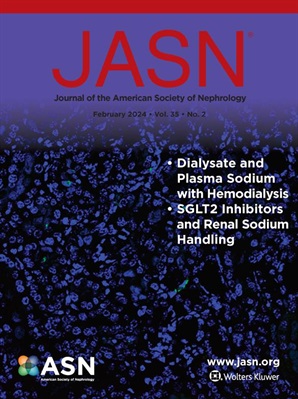心力衰竭患者容量状态的远程测量。
IF 9.4
1区 医学
Q1 UROLOGY & NEPHROLOGY
引用次数: 0
摘要
心力衰竭入院是由心脏充盈压力升高引起的,最终导致充血症状,这对患者和社会都造成了重大负担。监测体重和症状变化以触发治疗调整的传统策略,即使与远程医疗服务相结合,也未能改善结果。植入式血流动力学监测仪使临床医生能够获得有意义的客观数据,并有机会进行早期干预以改善结果。与心力衰竭和肾功能正常的患者相比,伴有肾脏疾病的患者是一个特别脆弱的人群,其住院率更高。几项研究表明,使用动态血流动力学监测仪可以降低住院率。在以下综述中,我们讨论了现有的文献,包括肾脏疾病患者的研究,并强调了该领域未来的创新。本文章由计算机程序翻译,如有差异,请以英文原文为准。
Remote Measurement of Volume Status in Heart Failure.
Heart failure admissions are driven by elevated cardiac filling pressures culminating in symptoms of congestion, and result in a significant burden to both patients and society. Traditional strategies of monitoring changes in weight and symptoms to trigger adjustments in therapy, even when combined with telemedicine services, have failed to improve outcomes. Implantable hemodynamic monitors allow clinicians to obtain meaningful, objective data, with an opportunity for early intervention to improve outcomes. Patients with concomitant kidney disease represent a particularly vulnerable population with higher rates of hospitalization compared to patients with heart failure and normal kidney function. Several studies have demonstrated a reduction in hospitalization rates with the use of ambulatory hemodynamic monitors. In the following review, we discuss the existing literature, including studies in patients with kidney disease, and highlight future innovations in the field.
求助全文
通过发布文献求助,成功后即可免费获取论文全文。
去求助
来源期刊
CiteScore
22.40
自引率
2.90%
发文量
492
审稿时长
3-8 weeks
期刊介绍:
The Journal of the American Society of Nephrology (JASN) stands as the preeminent kidney journal globally, offering an exceptional synthesis of cutting-edge basic research, clinical epidemiology, meta-analysis, and relevant editorial content. Representing a comprehensive resource, JASN encompasses clinical research, editorials distilling key findings, perspectives, and timely reviews.
Editorials are skillfully crafted to elucidate the essential insights of the parent article, while JASN actively encourages the submission of Letters to the Editor discussing recently published articles. The reviews featured in JASN are consistently erudite and comprehensive, providing thorough coverage of respective fields. Since its inception in July 1990, JASN has been a monthly publication.
JASN publishes original research reports and editorial content across a spectrum of basic and clinical science relevant to the broad discipline of nephrology. Topics covered include renal cell biology, developmental biology of the kidney, genetics of kidney disease, cell and transport physiology, hemodynamics and vascular regulation, mechanisms of blood pressure regulation, renal immunology, kidney pathology, pathophysiology of kidney diseases, nephrolithiasis, clinical nephrology (including dialysis and transplantation), and hypertension. Furthermore, articles addressing healthcare policy and care delivery issues relevant to nephrology are warmly welcomed.

 求助内容:
求助内容: 应助结果提醒方式:
应助结果提醒方式:


